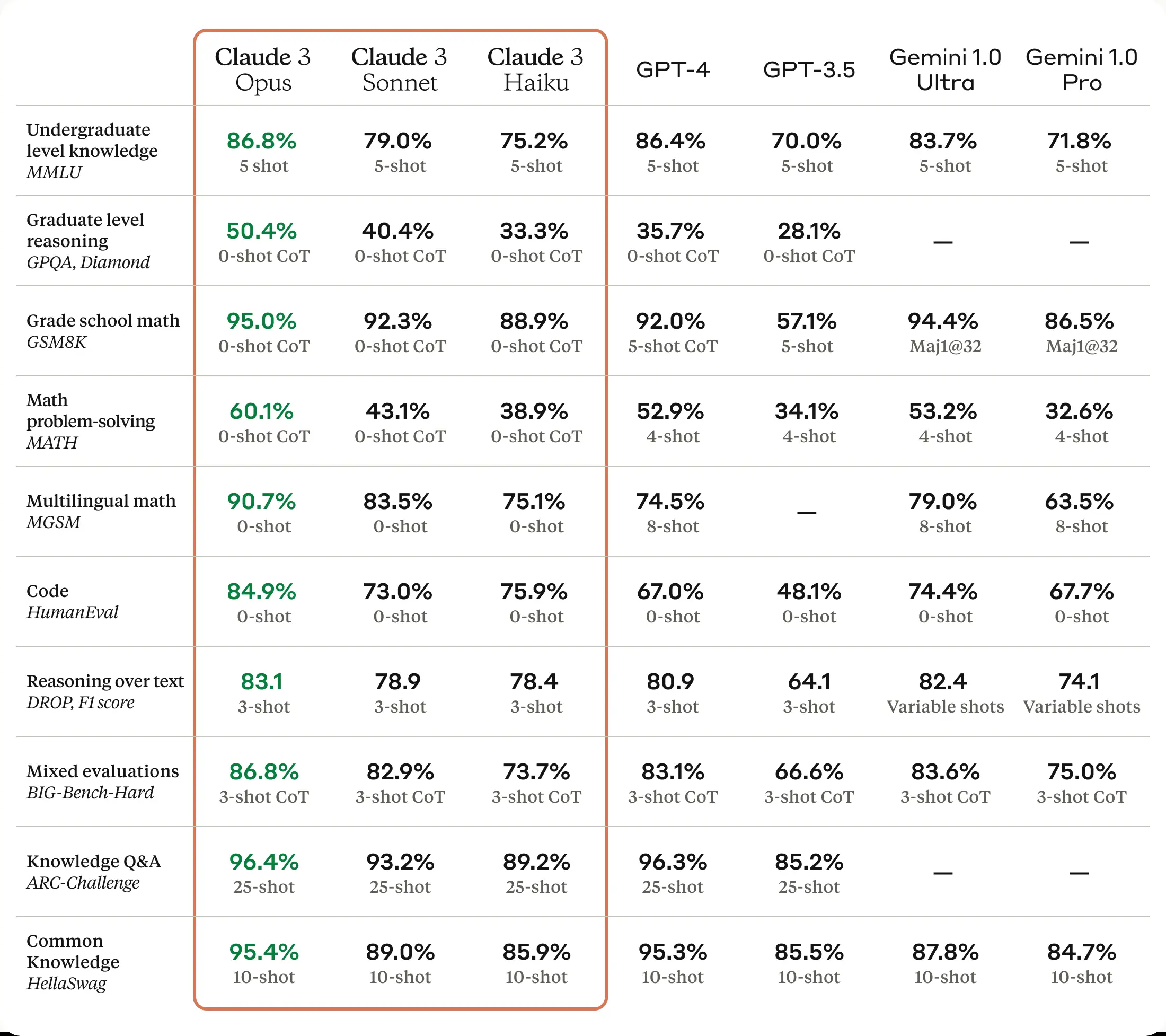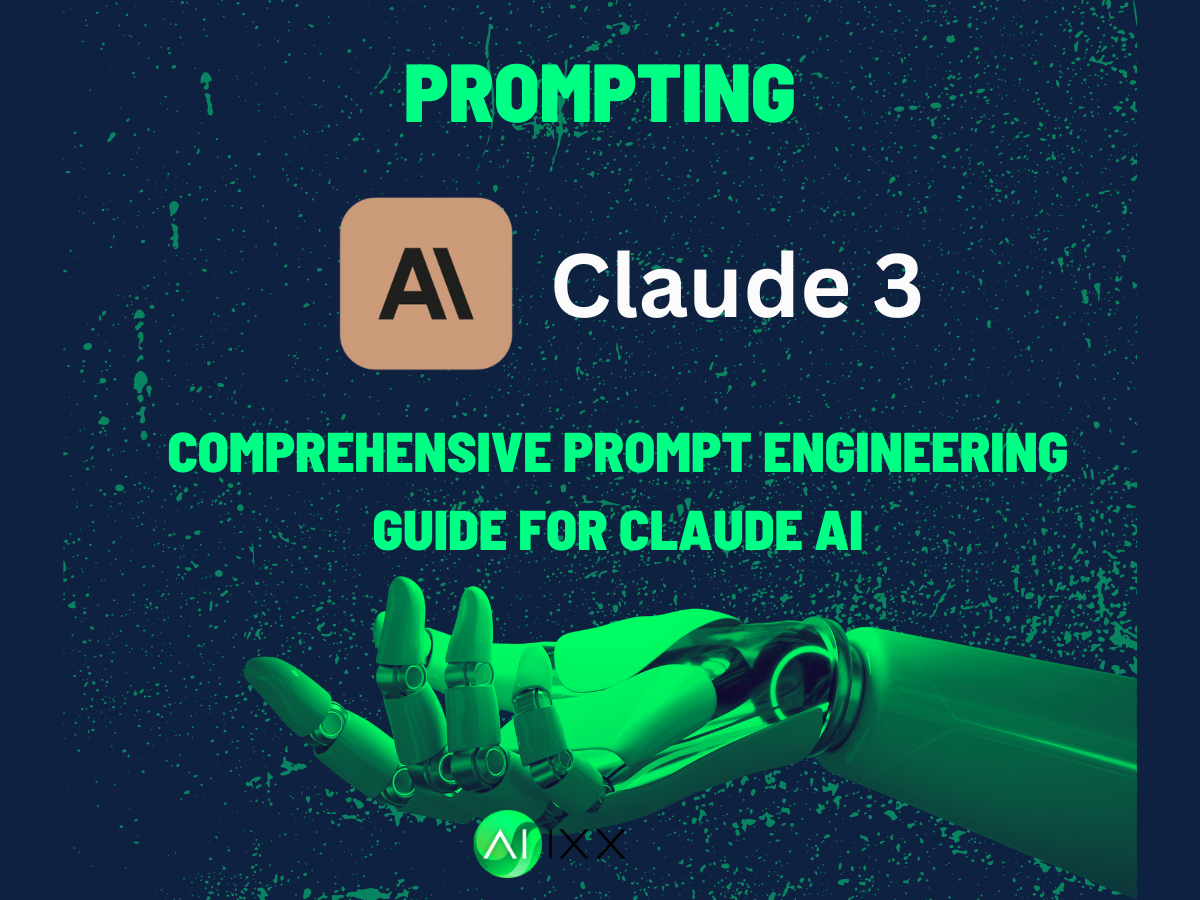Best Techniques to Prompt Claude AI
Claude, the advanced AI assistant from Anthropic, offers impressive capabilities right out of the box. However, applying some prompt engineering techniques can further enhance Claude's performance and tailor its responses to suit your specific use case better. In this article, we'll explore the most effective methods for prompting Claude so you can get the most out of this powerful AI tool.
Model Variations
Claude 3 Haiku
- Ideal for small to medium businesses and startups.
- Useful for customer service chatbots and automating routine tasks.
- Suitable for e-commerce platforms for customer interactions and content moderation.
Claude 3 Sonnet
- Fits multinational corporations with diverse language and regional AI needs.
- Beneficial for tech companies in software development and data processing.
- Appropriate for financial institutions for decision-making and risk assessment.
Claude 3 Opus
- Targeted at research and development firms for deep analysis and innovation.
- Useful for large enterprises in finance and healthcare for predictive analytics and complex problem-solving.
- Suited for strategic planning and security analysis.

Prompting Strategies
The table will look like this when we publish
Key Prompt Engineering Techniques
| Technique | Description |
|---|---|
| Clear and direct prompts | Provide explicit instructions and context to guide Claude's responses |
| Use examples | Include examples in prompts to illustrate the desired output format or style. |
| Assign a role | Prime Claude to take on a specific role to improve performance for your use case |
| Leverage XML tags | Include examples in prompts to illustrate the desired output format or style. |
| Provide sufficient context | Incorporate XML tags to structure prompts and responses for greater clarity. |
| Iterate and refine | Continuously test and refine prompts based on Claude's outputs |
Here are some of the top techniques for optimizing your prompts when working with Claude:
- Be clear and direct
- Provide explicit instructions and context to guide Claude's responses
- Avoid ambiguity and vagueness in your prompts
- Use examples
- Include examples in your prompts to illustrate the desired output format or style.
- Examples help Claude better understand the task at hand
- Assign Claude a role
- Prime Claude to take on a specific role (e.g., expert, advisor, storyteller) to improve performance for your use case
- Specifying a role helps Claude adopt the appropriate tone and perspective
- Leverage XML tags
- Incorporate XML tags to structure prompts and responses for greater clarity.
- Claude is fine-tuned to recognize and respond to XML tags.
- Provide sufficient context
- Give Claude enough background information to generate accurate and relevant responses.
- Avoid assuming Claude has prior knowledge of the topic or conversation
- Iterate and refine
- Continuously test and refine your prompts based on Claude's outputs
- Prompt engineering is an iterative process that requires experimentation and adjustment

Good Prompt Examples
Example 1: Recipe Recommendations
- Good Prompt: "As an expert home cook for someone who loves spicy food but is allergic to peanuts, could you suggest three vegetarian dinner recipes that take less than 30 minutes to prepare?"
- Why It Works: This prompt is clear, provides specific dietary restrictions, preferences, and a time constraint, making it easier for Claude to generate relevant and useful responses.
Example 2: Travel Itinerary
- Good Prompt: "As a travel advisor, could you create a 7-day itinerary for a family of four visiting Paris, France, in July, focusing on historical sites, kid-friendly activities, and avoiding overly crowded spots?"
- Why It Works: The prompt specifies the destination, travel dates, group composition, and interests, enabling Claude to tailor the itinerary to the user's needs.
Wrong Prompt Examples
Example 1: Recipe Recommendations
- Wrong Prompt: "I want to cook something."
- Why It's Bad: This prompt lacks specificity regarding dietary preferences, allergies, meal type, or any other relevant details, leading to a broad and potentially irrelevant set of suggestions.
Example 2: Travel Itinerary
- Wrong Prompt: "Give me a travel plan."
- Why It's Bad: Without details on the destination, duration, interests, or any other preferences, this prompt is too vague, making it challenging for Claude to provide a meaningful or actionable travel plan.

By applying these prompt engineering techniques, you can unlock Claude's full potential and achieve better results for your specific tasks and projects. Remember, the key is to experiment, iterate, and refine your prompts based on Claude's responses.
As you work with Claude, keep in mind that prompt engineering is a skill that develops over time. Don't be discouraged if your initial prompts don't yield perfect results. With practice and persistence, you'll learn to craft prompts that elicit the desired outputs from Claude.
So, go ahead and put these prompt engineering techniques into practice. Explore the possibilities of what you can achieve with Claude by optimizing your prompts. With the right approach, you'll be able to leverage Claude's advanced capabilities to streamline your workflows, generate valuable insights, and create compelling content.





